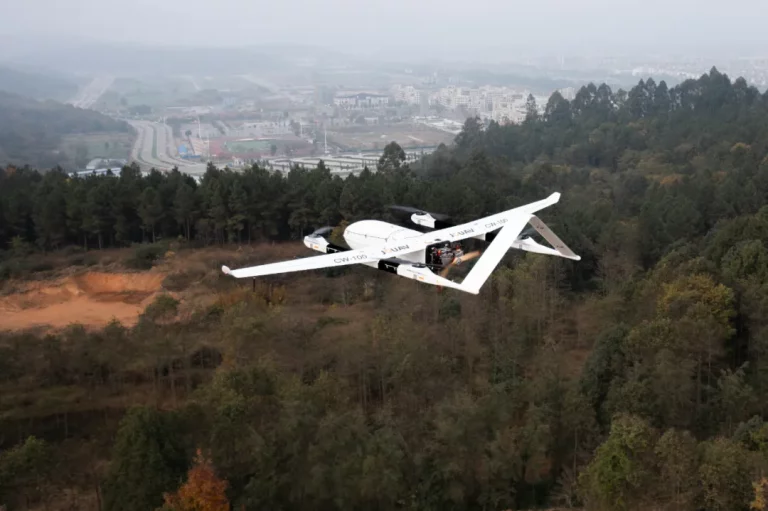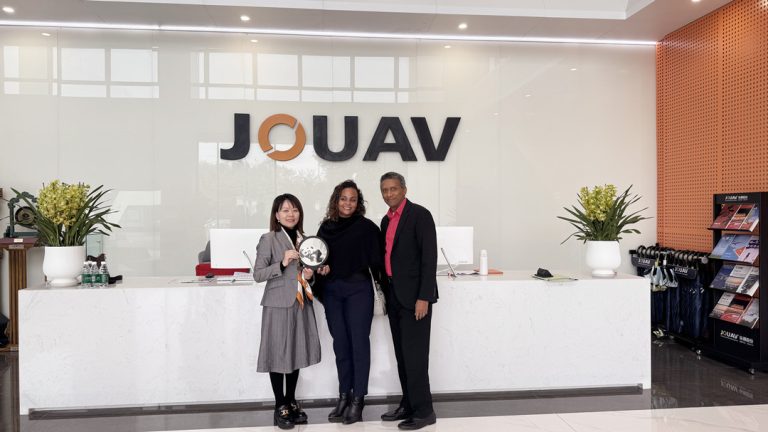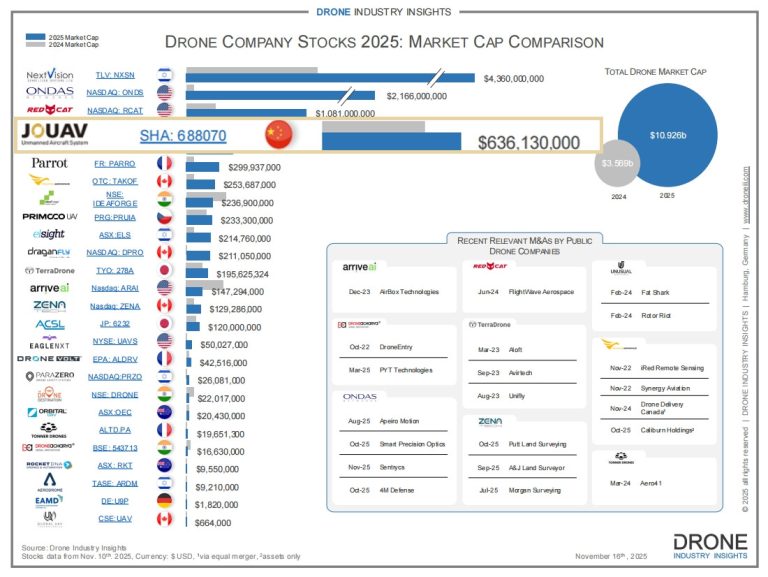JOUAV Launches the World’s First Hydrogen-powered VTOL UAV
On May 8, JOUAV successfully delivered the global practical hydrogen-powered vertical take-off and landing (VTOL) fixed-wing UAV CW-25H at the Beichuan flight base in Mianyang, Sichuan Province, China, with a flight time of 330 minutes.
Cooperation between JOUAV and Doosan
After entering the 21st century, new energy represented by hydrogen energy, with its advantages of high efficiency, pollution-free, and zero emissions, has received increasing attention from countries worldwide. As a primary form of hydrogen energy application, the hydrogen fuel cell has two to three times the energy density of traditional lithium batteries, and is superior to conventional lithium batteries in terms of convenience and safety, and does not produce secondary pollution. Compared with traditional internal combustion engine power, the hydrogen fuel cell has no corrosion, zero emission, and low vibration. It is one of the best choices for long-endurance drones.
In recent years, domestic and foreign companies have launched fixed-wing UAVs and multi-rotor UAVs with hydrogen fuel cells as the primary energy source. Still, the development of hydrogen-powered vertical takeoff and landing fixed-wing UAVs has been a gap.
On May 30, 2019, JOUAV and Doosan Innovation signed an agreement for JOUAV to be responsible for the hydrogen-powered UAV platform system and Doosan to be accountable for the hydrogen-powered UAV fuel cell system to cooperate in the development of hydrogen-powered vertical takeoff and landing UAVs and achieved the first flight of the hydrogen-powered technology proving aircraft in the same year.
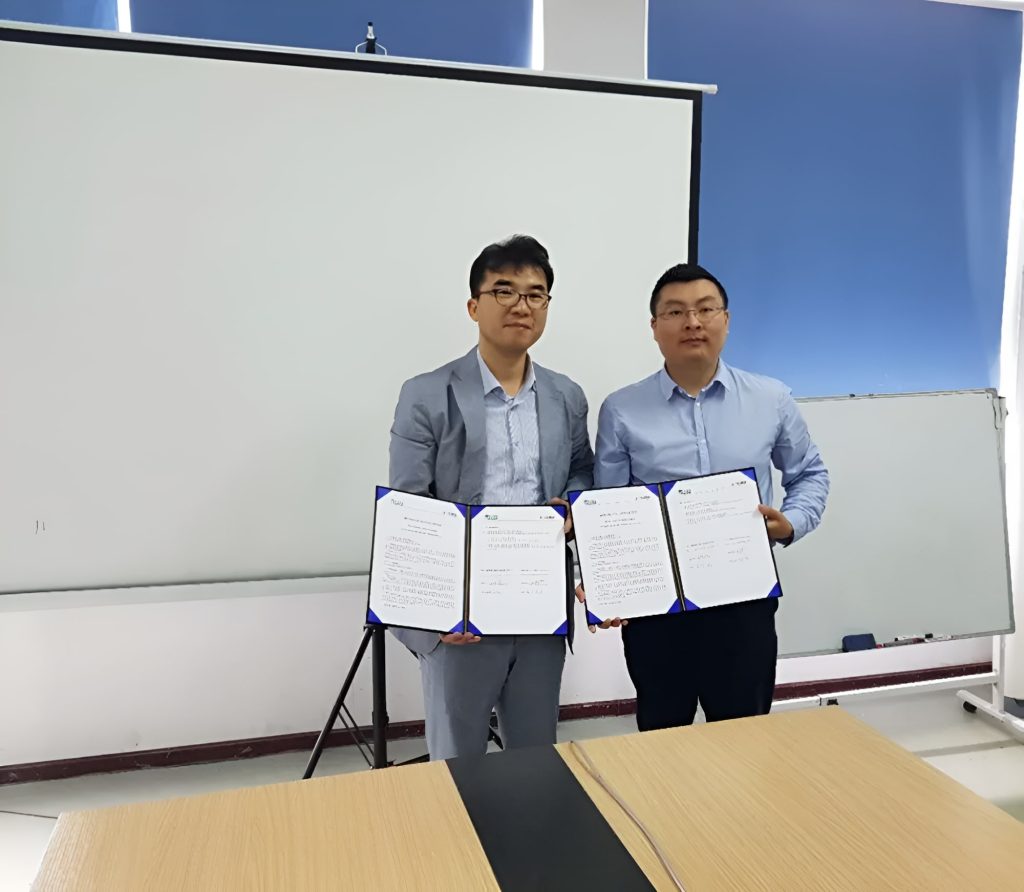
Dr. Chang-Suan Lee, CTO of Doosan Innovation (left), and Dr. Li-Guang Wang, Vice President of JOUAV (right), sign an agreement to finalize the cooperation and development in May 30, 2019.
After two years of intensive technical research, JOUAV has completed the development of an integrated hydrogen fuel cell + UAV platform based on its rich technical accumulation in the field of vertical takeoff and landing (VTOL) fixed-wing UAVs; Doosan Innovation has successfully launched a new generation of lightweight, air-cooled DM15 fuel cell system based on its technical advantages in the field of fuel cells. The close cooperation between the two parties has enabled the hydrogen-powered VTOL drone to move from concept exploration and critical technology research to the stage of engineering and radicalization.
Hydrogen fuel cell system UAV
The CW-25H fully inherits the development achievements of the JOUAV Series vertical takeoff and landing (VTOL) fixed-wing UAV. At the same time, of the characteristics of the fuel cell system, new explorations and attempts have been made in the overall design of the UAV, energy system design, etc.
Since hydrogen fuel cells are different from conventional batteries in that they directly convert the chemical energy contained in hydrogen and oxygen into electrical energy, and essentially only have the function of electricity generation but not electricity storage, and need to carry a hydrogen storage device, the fuel cell system poses a severe challenge to the UAV design in terms of aerodynamics, structure, energy, and power.
JOUAV utilizes its excellent technical strength in the overall aerodynamic, structural, and power design of UAVs. Based on in-depth research, JOUAV fully grasps the power characteristics, discharge characteristics, and environmental features of the fuel cell system through extensive ground tests and adopts a multidisciplinary and comprehensive design approach to achieve a high all-aircraft lift-to-drag ratio and the lightest structural weight while meeting the harsh requirements of the fuel cell system on the working environment, reaching the design goal of integrating the aerodynamics, structure, energy, and efficiency of the UAV platform.
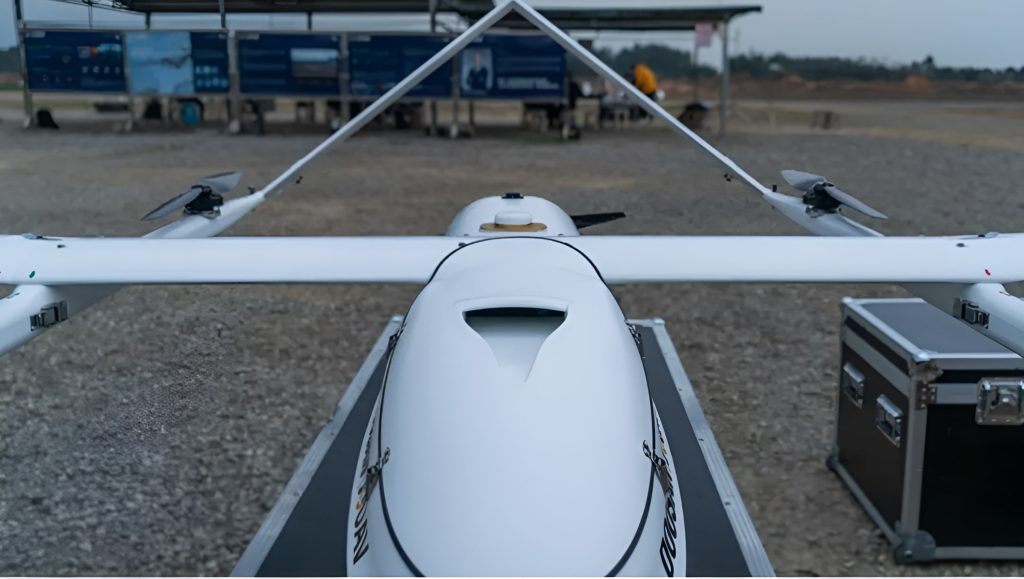 In terms of UAV energy system design, unlike fixed-wing UAVs and multi-rotor UAVs, vertical takeoff and landing (VTOL) fixed-wing UAVs have vastly different energy system power requirements during takeoff, landing, and cruising phases, putting forward higher requirements for the matching design of energy systems.
In terms of UAV energy system design, unlike fixed-wing UAVs and multi-rotor UAVs, vertical takeoff and landing (VTOL) fixed-wing UAVs have vastly different energy system power requirements during takeoff, landing, and cruising phases, putting forward higher requirements for the matching design of energy systems.
JOUAV worked closely with Doosan Innovation to achieve smooth flight of the UAV platform in various operating modes through a perfect hybrid system energy scheduling strategy, which firmly ensures the operational effectiveness of the UAV.
DM15 lightweight fuel cell system
The fuel cell system is the heart of a hydrogen-powered UAV. Doosan has developed the new DM15 lightweight fuel cell system for the CW-25H based on its strengths in fuel cell system development, reactor lightweight, reactor environmental resistance technology, and hydrogen storage technology. The DM15 system is the leading air-cooled fuel cell system globally with its high-quality hardware and systematic and high-performance software control, which integrates the power generation module, high voltage hydrogen storage module, and power management module.
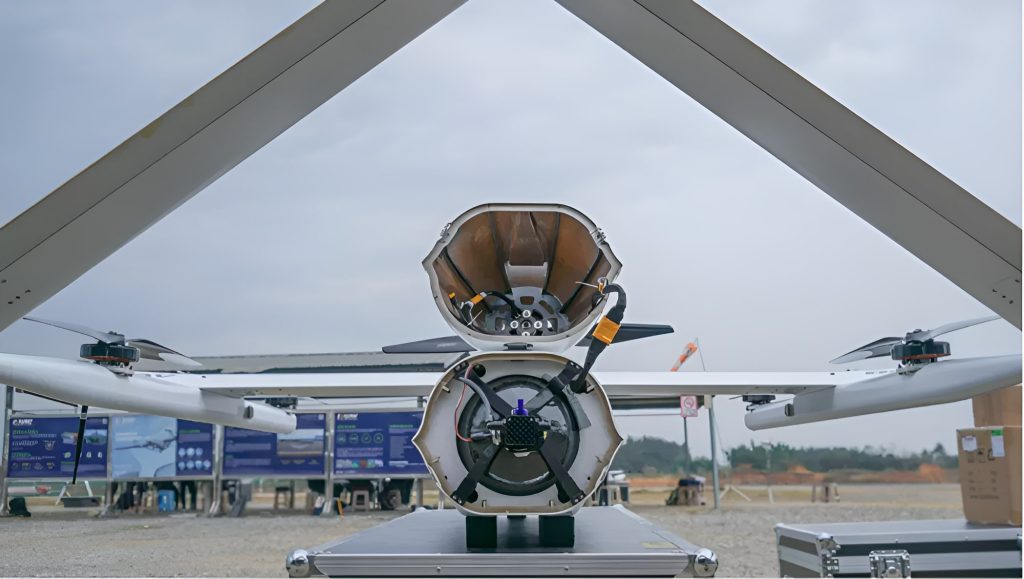 Hydrogen storage cylinders are also a core component of fuel cells. Doosan innovatively adopts Type4/Type3 high-pressure hydrogen storage cylinders and secondary pressure-reducing valves independently designed and developed, which have been certified by DOT in the U.S., TPRD in the EU, and KGS in Korea, and have improved the cylinder protection scheme to ensure the safety of hydrogen during the filling, transportation, and use stages.
Hydrogen storage cylinders are also a core component of fuel cells. Doosan innovatively adopts Type4/Type3 high-pressure hydrogen storage cylinders and secondary pressure-reducing valves independently designed and developed, which have been certified by DOT in the U.S., TPRD in the EU, and KGS in Korea, and have improved the cylinder protection scheme to ensure the safety of hydrogen during the filling, transportation, and use stages.
At the same time, we cooperate with global hydrogen suppliers to develop hydrogen refueling systems applied to small mobile equipment and realize hydrogen filling and nationwide distribution service in China, which provides reliable hydrogen energy guarantee for CW-25H's operation all over the country.
CW-25H Hydrogen-Powered VTOL UAV
CW-25H achieves a range comparable to that of oil-powered vertical take-off and landing (VTOL) fixed-wing UAVs through the deep integration of flight platforms and fuel cell systems while having the advantages of zero emissions, no noise, low vibration, and low maintenance costs.
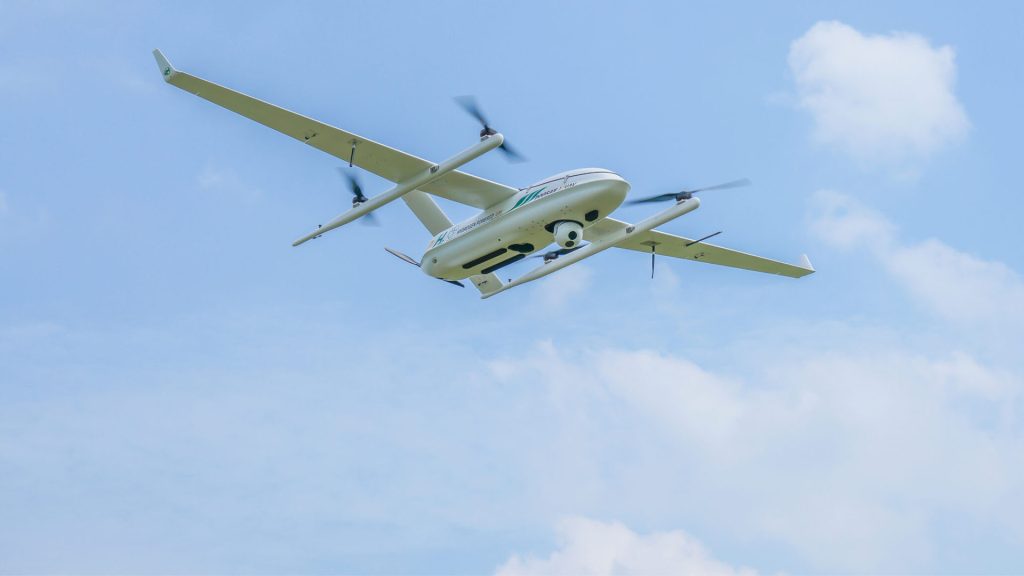
CW-25H hydrogen-powered VTOL UAV performance parameters:
| Flight Platform | Wingspan/fuselage length | 4.4m/2.1m |
| Maximum take-off weight | 31kg | |
| Maximum payload | 4kg | |
| Wireless link range | 50km/100km | |
| The Fuel Cell | System weight (stack + hydrogen supply system) | 7.2kg |
| Rated power | 1250W | |
| Operating temperature | 0~40℃ | |
| Material of hydrogen storage cylinder | Aluminum alloy liner + carbon fiber winding | |
| The capacity of the hydrogen storage cylinder | 12L | |
| Mission Load | Payload | 2~4kg |
| Double light pod | MG150 Double light pod | |
| Surveying camera | Half frame/full-frame/tilt camera | |
| Flight Performance | Cruising speed | 80km/h |
| Battery life | 330min | |
| Vertical positioning accuracy | 3cm | |
| Horizontal positioning accuracy | 1cm+1ppm |
The emergence of CW-25H will favorably promote the renewal and upgrading of industrial UAV energy systems, significantly improve the flight performance of industrial UAVs while realizing the power of industrial UAVs with hydrogen energy, and further promote the application of industrial UAVs in various fields.
In the future, the two partners will further strengthen the practical scenario application of CW-25H and expand the application development and trial of hydrogen fuel cells in other vertical takeoff models.



